"Don't tell me the moon is shining; show me the glint of light on broken glass." -Anton Chekhov
Ahh, Chekhov, you old sour puss, what do you have against the brilliance of our Moon?
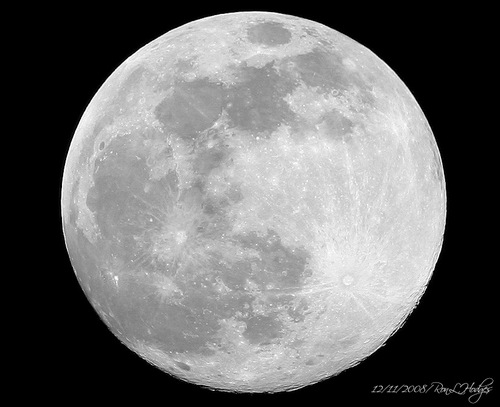
Beautiful in our sky, the Moon typically takes up half-a-degree in the night sky, where it's by far the largest and brightest object visible to the naked eye (well, for those of you who can't see the full Andromeda galaxy with your naked eye). But the Moon actually varies in its apparent size in the sky! If you photograph the Moon when it appears to be at its largest, it actually appears about 14% bigger than when it's at its smallest!
Why's this? The Moon orbits in a giant ellipse around our Earth, where sometimes it's at its closest to us and sometimes it's at its farthest. And most of the time, this is what's responsible for how large the Moon appears.
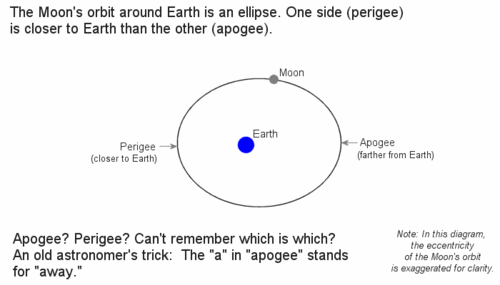
Not only that, but some perigees -- the point of the Moon's closest approach to Earth -- are closer to us than others! These slight variations are due to the gravitational forces of other objects (mostly the Sun) in our Solar system, and it causes the actual perigee and apogee (when the Moon is farthest from Earth) distances to vary, periodically, over time!
In addition to that, the Moon is exactly 100% full only one instant a month, and that moment is very unlikely to line up with the exact moment of perigee. In other words, sometimes we see the Moon full near perigee, sometimes near apogee, and most of the time somewhere in-between.
Well, the last near-perfect alignment between the full Moon and perigee happened in 1992, and the next one happens on Saturday! And that's what the Supermoon is!

Of course, it won't look like this! The Moon will, in actuality, still be some 350,000 kilometers away from us, and instead of taking up the meager "half-a-degree", will take up about 0.56 degrees on the sky!
Wow.
And, as you may have heard, some people are attributing natural disasters galore to the "Supermoon."

So what are the real facts? Well, we told you earlier this week what causes Earthquakes, and it isn't the tides. But the "Supermoon" will cause the highest high tides and the lowest low tides we've seen in a long time, but only by about an inch.
The Moon is so gravitationally weak and distant, compared to the Earth, that it simply can't affect us nearly as much as our internal processes do; and that's what really causes things like earthquakes, volcanoes, etc.
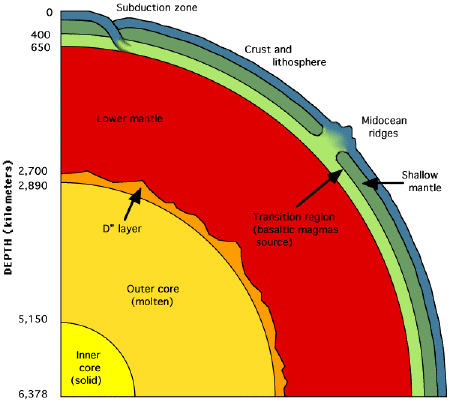
But it could work the other way around! Back during the Apollo Moon Landing Missions, we installed seismometers on the Moon, and know what we found? We get Moonquakes all the time!
Above was the first one, installed by Buzz Aldrin, who's pictured above. The causes of all the Moonquakes -- particularly the deep ones -- are still unknown, and the Earth's tidal forces on the Moon are one possibility! But the Moon won't be doing anything more than looking huge and beautiful in the night sky, where it will be the biggest and brightest it's been in 18 years on Saturday!
So go have a look, and if you want to see more detail of both the near side and the far side, check out these links. And enjoy the natural wonder that is the Supermoon!

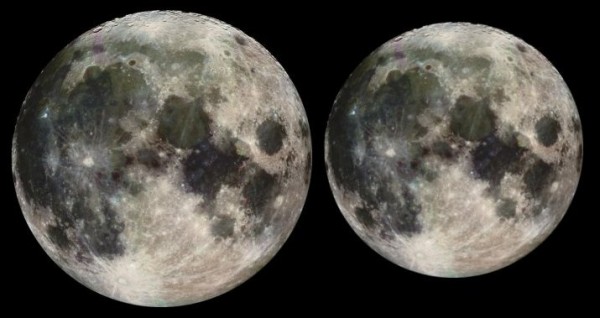
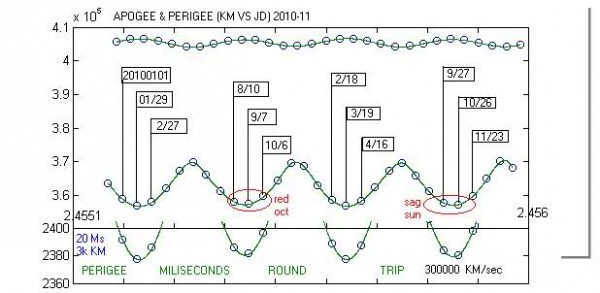
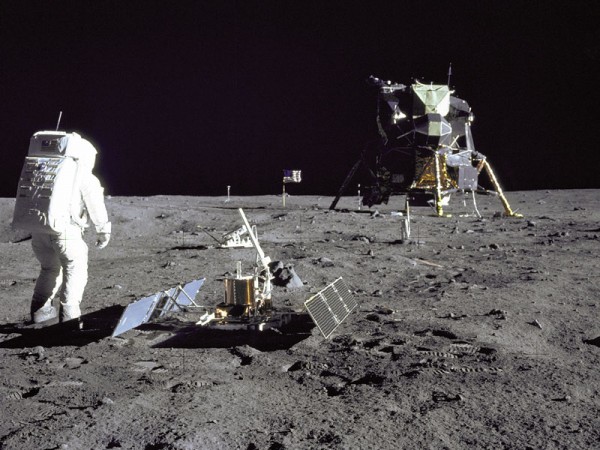
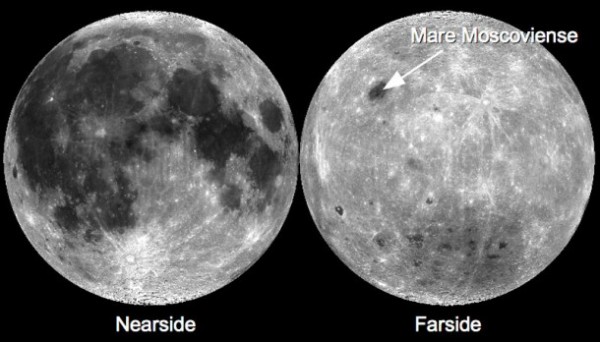
The Moon isn't exactly 100% full if it isn't a lunar eclipse, is it now :P
Also, I wasn't clear when I read this post why a "supermoon" should increase tides more than any other perigree, as you suggest, given the only distinction is that the Moon is close to being full (irrelevant to the tides, no?). I had to look it up on Wikipedia to realise the Sun affects tides too so the Sun and Moon being at opposite sides of the Earth enhances tides.
Good post though, thanks!
I love your posts .. they always interrupt a good fifteen minutes of work - thank you
I wish there was a way to force the crazies of the world to read this. Maybe we can get one of those Thought Beams? Oh, darn, they're all already wearing tinfoil...
Doesn't that plate tectonics image have the subduction zone backwards? I thought ocean crust almost always subducted under the lighter continental crust.
William, thanks; you won't find it here unless you go to my How Tides Work post, which I perhaps should have linked to in the article.
Elvis and abadidea, thank you!
And Robert S., you have it right, but the diagram could have it right, too. Because while the oceanic crust is always, as far as we know, the subducted (underneath) plate, the subducting (top) one could be either continental or oceanic. So if that diagram has two oceanic plates, it could be just fine.
I never realized that the Earth's orbit was elliptical enough to account such a large measured difference in moon size.
I had thought that perceived size difference was entirely due to the moon illusion.
"It appears larger in size because the brain perceives a low-hanging moon to be larger than one that's high in the sky." How big is the moon illusion? "Some people judge it to be as much as twice as large, but the average estimate is 50% to 75% larger. It's not a small effect."
Nevertheless, I am impressed by a 14% change in measured size.
Thanks for the explanation.
Hey!!! look at this!!!
National Geographic News, Published March 17, 2011
"tomorrow the moon will make its closest approach to Earth in 18 years â making the so-called supermoon the biggest full moon in years."
http://news.nationalgeographic.com/news/2011/03/110318-supermoon-earth-…
Moon comes up,moon goes down .......can`t explain that!
Doesn't that plate tectonics image have the subduction zone backwards? I thought ocean crust almost always subducted under the lighter continental crust.
will@1
The largest tides come during the so called spring tides, when lunar and solar tides are in phase (during full and new moon phases).
@camiva #9
Looks very much that way to me.
@others discussion on the Eruptions blog shows that in terms of tides creating earthquakes, then it is nonsense, as the forces build up for hundreds of years, give or take a zero.
However there does seem some evidence that there is a small correlation of earthquakes with the phase of the moon, consistent with the idea that in a small number of cases the tides are the straw that breaks the camel's back in a situation a fault is on the point of letting go.
But, as Ethan says, the tides are miniscule compared to the processes going on in the earth.
David B
@others discussion on the Eruptions blog shows that in terms of tides creating earthquakes, then it is nonsense, as the forces build up for hundreds of years, give or take a zero.
Moonquakes? How much is known about the magnitude of seismic activity?
Ä°srailâi savaÅ suçu iÅlemekle suçlayan BirleÅmiÅ Milletler(BM) Komisyonuânun baÅkanı Richard Goldstoneânun U dönüÅü yapmasının ardından Ä°srail de, raporun rafa kaldırılması için harekete geçti